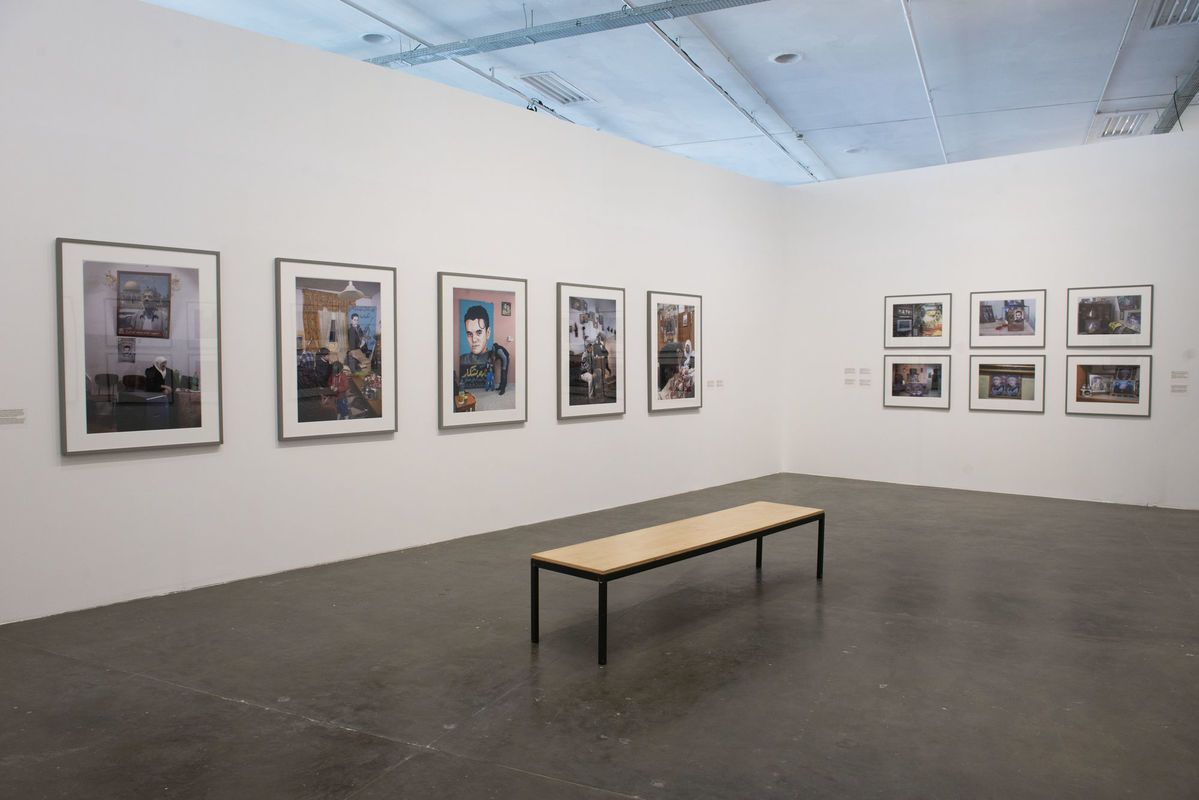
Ahlam Shibli
In a text about Ahlam Shibli’s work, critic and art historian T.J. Demos recalls the philosopher Roland Barthes and points out: “Death is the eidos of photography, its ideal form and most distinguished expression. In fact, there can be no photograph that does not render absent what it represents.”¹
In the 68 photographs of the Death series (2011–12), Ahlam Shibli seems to confirm and at the same time reverse this assumption. She confirms it insofar as the subject of the series is the regime of images and the visual culture of martyrdom in Palestine. Conversely, she questions it since, when death is the object, absence ceases to hover like a specter over the photographic image. Brought to light, detected, death challenges the statute of photography itself, threatening it with the loss of its absenting qualities.
In Shibli’s Death, the loss of human lives is echoed by the potential loss of Barthes’ photographic eidos.
Posters, photographs, paintings and banners of Palestinian martyrs of the Second Intifada (2000–2005) populate Shibli’s images. The work is certainly a stark statement, a testimony to the violence exercised by the Israeli state on Palestinians, an act of rebellion against the political and physical elimination of Palestine and its inhabitants. It is, moreover, a testimony to the ubiquity of death in Palestinian society. Indeed, images of martyrs populate public space as well as domestic space.
Looking at the composition of photographs that complete the series, one would be tempted to consider it as a single image and, to recall Barthes again, of an image we have learned to recognize the punctum, that is, that detail that breaks the relationship between the viewer and the intentionality of the photographer. There are at least two images/ details that punctuated my vision in this overview. The first portrays two young boys, seemingly serene, inside a Palestinian cemetery. The second captures two smiling women at home, under the image of a martyr, caring for an infant. The punctum is a rupture, a twinge, a wound; consequently, these two details in the series do not offer trivial consolation in the face of death’s pervasiveness, of its constant presence in the life of a colonial regime such as that to which Palestine is subjected. On the other hand, they still flash life as a ripple in the status quo, a tear in a necropolitical present.
marco baravalle
Ahlam Shibli (Palestine, 1970. Lives between Palestine and Germany) is a photographer. Through a documentary aesthetics, her works address the implications of contradictory notions of home and have been exhibited in spaces such as the Seoul Museum of Art, Busan Biennale (South Korea), Darat al Funun (Amman, Jordan), Remai Modern Museum (Saskatoon, Canada), Documenta 12 & 14 (Kassel, Germany), MACBA (Barcelona, Spain), Jeu de Paume (Paris, France), Museu Serralves (Porto, Portugal), Museum of Modern Art in Warsaw (Poland), Museo Reina Sofía (Madrid, Spain), Haus der Kunst (Munich, Germany), Kunsthalle Basel (Switzerland), Tate Modern (London, UK), Centre Pompidou (Paris, France), 27th Bienal de São Paulo (Brazil), Fondazione Cassa di Risparmio di Modena (Italy), Istanbul Biennial (Turkey) and Yokohama Museum (Japan).
1. T. J. Demos, “Disappearance and precarity: On the photography of Ahlam Shibli,” in Ahlam Shibli: Phantom home. Essays by T.J. Demos and Esmail Nashif. Exhibition Catalog. Barcelona/ Paris/ Porto/ Ostfildem: Museu d’Art Contemporani de Barcelona (macba) / Jeu de Paume / Museu de Arte Contemporânea de Serralves / Hatje Cantz, 2013, p. 16.

 Português
Português